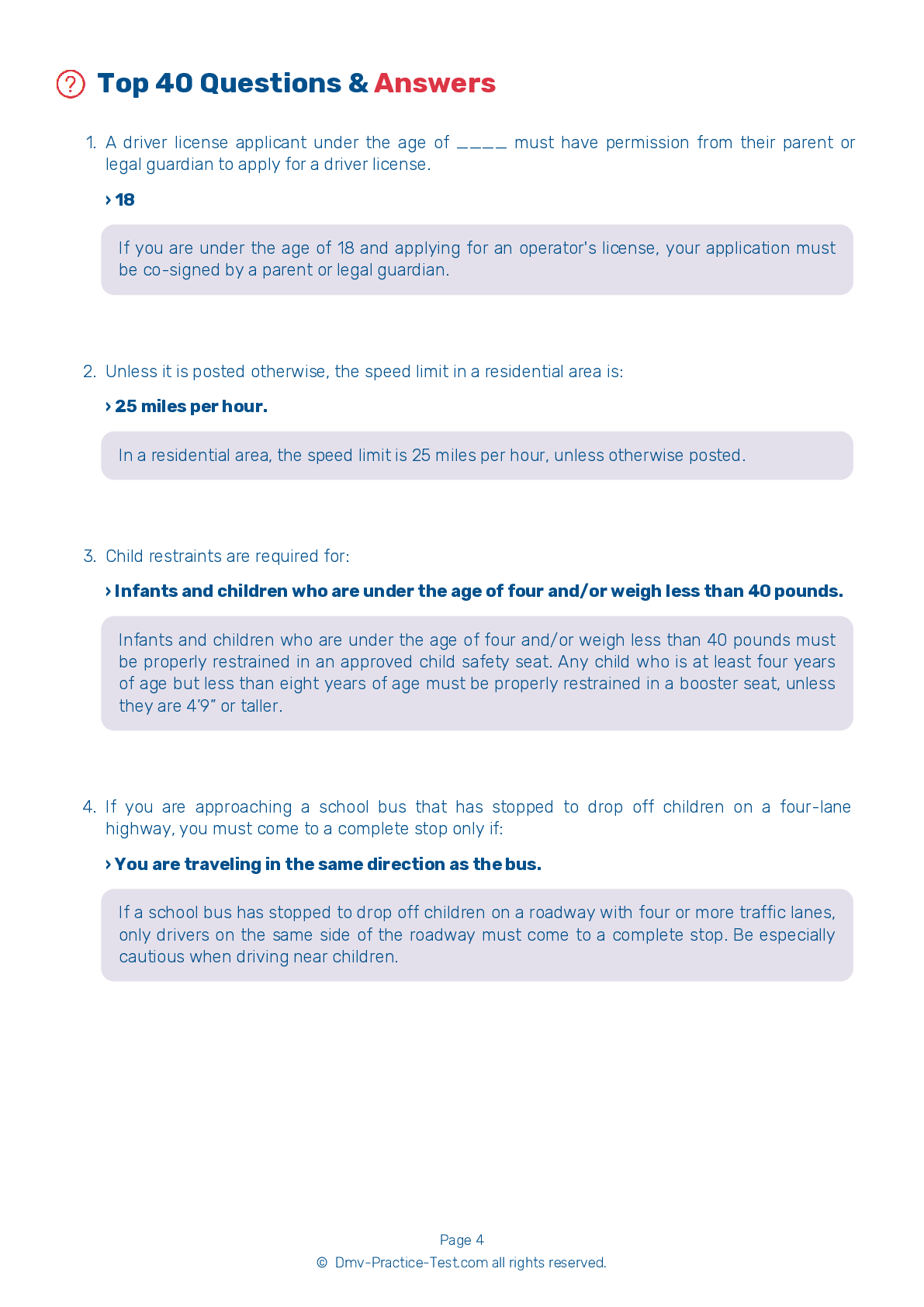FREE Ohio DMV Practice Test #4
The practise exams for Ohio's DMV have been revised for January 2025. It comprises questions based on the most important traffic signals and laws for 2025 from the Ohio Driver Handbook. To study for the DMV driving permit test and driver's licence exam, use actual questions that are very similar (often identical!) to the DMV driving permit test and driver's licence exam.
Each question on the practise exam has a tip and explanation to help you recall the ideas. Questions about traffic rules, traffic signs, and driving statutes, as well as knowledge from the Driver Handbook, will be included in the written portion of the official Ohio DMV test.
You must properly answer 35 of the 40 questions to receive a passing mark. To help you prepare for your instruction permit or driver's licence, take this practise test from the Ohio Department of Motor Vehicles.
The DMV exam is offered in a variety of languages.
Using any form of testing help will result in an automatic fail, and the DMV may take further action against your driver's licence, so avoid it.
1 . During normal weather and traffic conditions, keep a minimum following distance of:
The more distance between your vehicle and others, the more time you have to react. Keep a minimum following distance of three seconds during normal weather and traffic conditions. Increase your following distance during unusual weather or traffic conditions.
2 . This sign shows one type of:

This sign indicates that an intersection with a crossing road is ahead.
3 . Hydroplaning is usually caused by:
Your tires become less effective at clearing water from the road as you increase your speed. If you drive too fast, they may lose their grip entirely, leaving the vehicle sliding on a film of water. This is known as "hydroplaning."
4 . This sign means:

This sign means that it is not safe for drivers to enter the indicated road or driveway from their current direction. If you come across one of these signs, you should immediately turn around and drive a different way.
5 . A traffic light displaying a green arrow and a red light means that:
If a green arrow is shown with a red light, you can only drive in the direction of the arrow and only if the intersection is clear.
6 . This sign means:

A regulatory sign displaying a red circle with a red slash through the middle indicates that a specific action is prohibited. Right turns are not permitted where this sign is posted.
7 . Look over your shoulder to check your blind spot when:
Look over your shoulder to check your blind spot every time you want to change your vehicle's position. If you are turning, changing lanes, or pulling toward or away from a curb, you should check your blind spots.
8 . This sign means:




